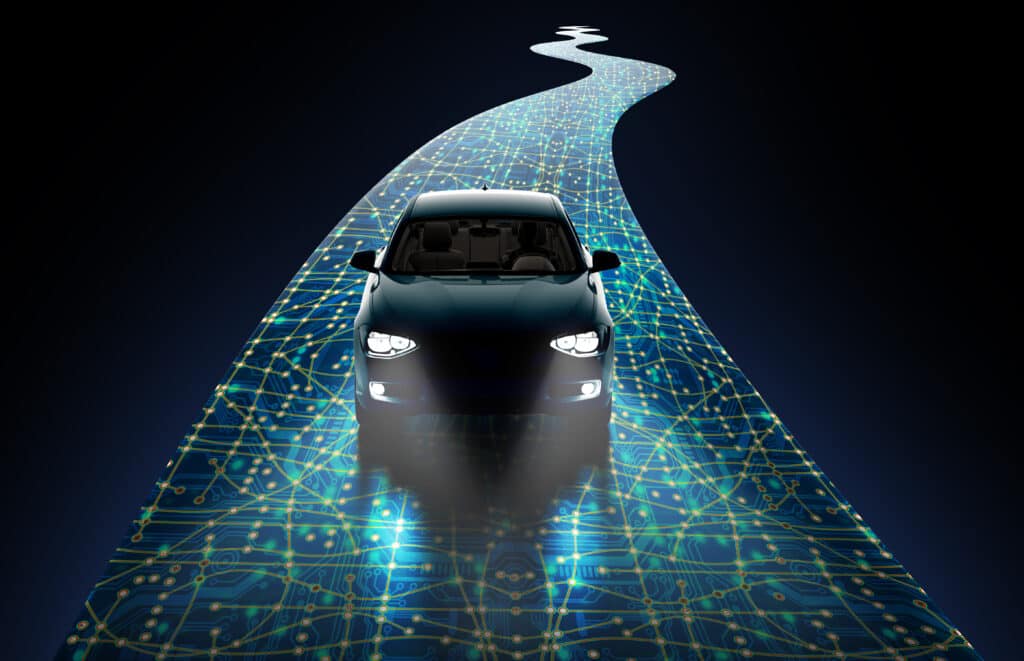Advancements in automotive technology are accelerating at an increasing rate. Combustion automobile engines have persevered and adapted through generations, although the emphasis on reduction in fuel consumption and elimination of greenhouse emissions has paved the way for their electric successors. In fact, a recent executive order calls for half of new cars to be electric or hybrid plug-ins by 2030. Automotive manufacturers have since doubled down on these regulations, hedging their futures on a fully electric infrastructure to support their products. For example, Toyota recently announced plans to invest $13.5 Billion by 2030 to develop batteries and the underlying supply chain, while Volvo has committed to putting 1 million electric vehicles on the road by 2025, some 50% of its total car sales.
With the shift toward vehicle electrification, the demand for autonomous vehicles continues to grow. As this technology develops, we can anticipate the number and complexity of electronic sub-systems to keep pace with consumer demand. These components have long been subject to environmental simulation and reliability testing in the consumer automotive space, and automotive manufacturers must follow specific testing mandates to ensure product safety and reliability certification before their wider application in the consumer market.
Test Standards for Today’s Demands
Environmental simulation mimics the conditions which a product or sub-system may experience over its normal life cycle. In a ‘test to pass’ method, products are exposed to a variety of temperature, humidity, and vibration simulations which generally don’t exceed the conditions of their intended use, and are considered safe for consumer markets once the simulation is passed. Some of the more common automotive tests, their standards, and equipment include:
Temperature and Humidity Cycling
These tests can be conducted on either complete vehicles or vehicle sub-systems, including electronic systems, to identify the adverse effects of temperature and humidity extremes. Examples include rapidly changing temperature tests for electronics enclosures to prevent cracking or warping or moisture condensation in circuits or sensors which could invalidate or undermine performance. Various standards for temperature and humidity testing include:
- IEC 60068-2-1 (low temperature wake-up)
- IEC 60068-2-64 (thermal cycling with vibration)
- ISO 16750-4 (high temperature degradation)
- Ford FLTM BO 040-01 (short term cycling and long term heat exposure)
Rapid temperature and humidity cycling can be accomplished using a variety of equipment including reach-in chambers and thermal shock chambers. Applications for larger components or full vehicle systems can also be accommodated in walk-in or drive-in temperature and humidity chambers. Key indicators for consideration include temperature uniformity and effective airflow to facilitate heat transfer from the chamber to the product under test. Typical temperature range and rates for these systems are -70°C to 180°C with temperature change rates of 5°C to 15°C per minute.
Vibration Compatible Testing
Combined vibration and environmental simulation testing yield important qualification insights for product structural and total reliability. Users can combine temperature, humidity, and sine or random vibration using both mechanical and electrodynamic shakers to simulate road vibration or sudden impact from a pothole. Several common standards for vibration testing include:
- SAE J1211 (robustness validation of electric modules)
- GM 3172 (environmental durability for electrical components)
- ISO 16750 (environmental conditions and testing for road vehicles)
AGREE chambers were originally developed for military and aerospace applications requiring temperature, humidity, and vibration simulation. The technology has since been adapted to conform to automotive industry standards to perform reliability and qualification testing. A vibration compatible chamber can be designed to seamlessly integrate with an existing shaker to perform simultaneous temperature, humidity, and vibration with thermal change rates as high as 30°C per minute.
Testing for the Future, Today
While emerging battery and autonomous vehicle technologies gain traction over the next decade, properly working components are as critical as ever. As the automotive industry adapts, and consumers increase dependence on electrified vehicles, the complexities and number of electrical components and systems will continue to grow. Battery testing and environmental simulation of these products will not only ensure their effectiveness, but moreover pave the way toward a safe, reliable, and autonomous driving infrastructure of the future.
Russells Technical Products has the environmental test chamber to fit your automotive testing needs. Contact us today to start a conversation. Our products are designed and built with your products in mind, for over 50 years in Holland, MI.
